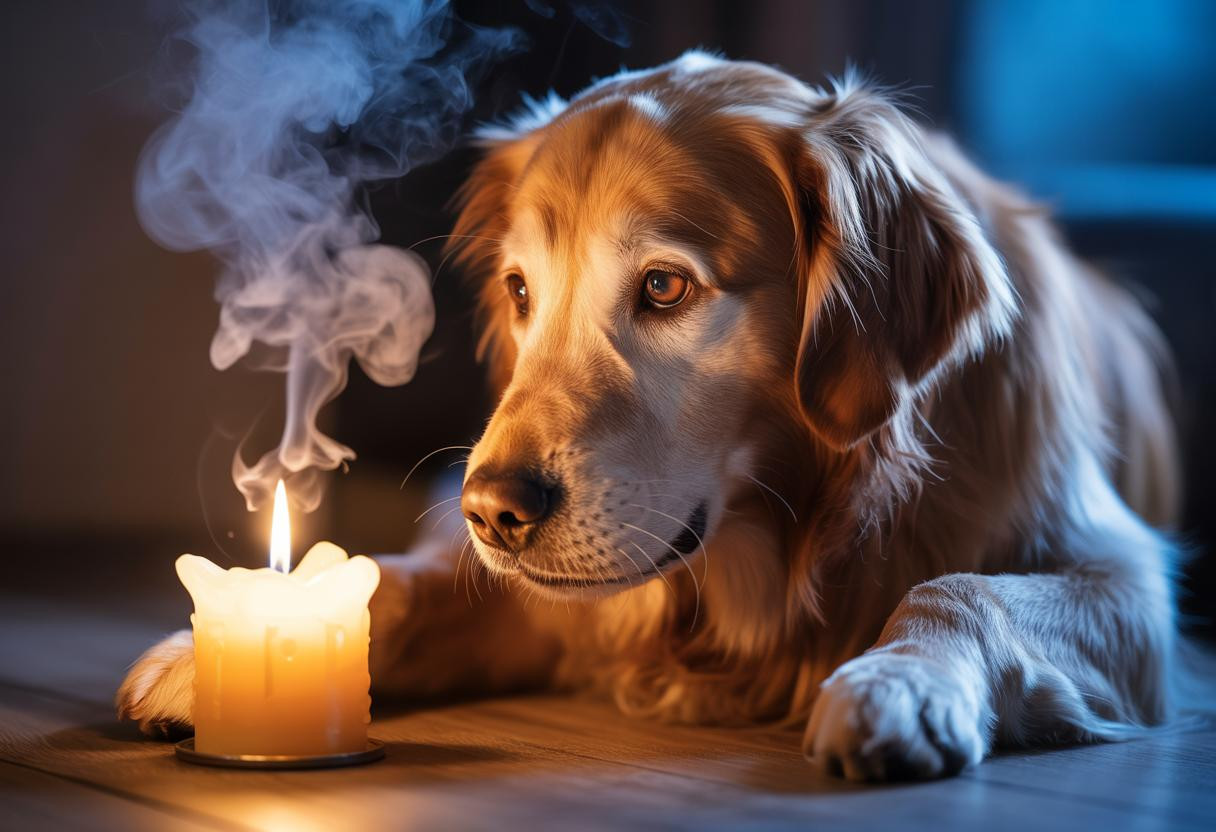That cozy candle flickering in your living room might be silently damaging your pet’s lungs with every breath they take. While you’re enjoying the warm vanilla scent, your dog or cat could be inhaling toxic compounds like benzene and formaldehyde that accumulate in their smaller respiratory systems at dangerous concentrations. Most pet owners have no idea their favorite home fragrance is creating an invisible health hazard for their beloved companions.
The hidden chemistry behind scented candle dangers
When scented candles burn, they release a cocktail of harmful chemicals into your home’s air. Paraffin wax candles emit three to five times more volatile organic compounds (VOCs) than natural alternatives, creating an indoor pollution problem that affects pets more severely than humans.
The synthetic fragrances in these candles contain phthalates—chemical compounds linked to respiratory irritation and asthma development in animals. Dogs experience higher concentrations per unit of body weight, with a 10-kilogram dog inhaling three to five times the VOC mass per gram compared to a 70-kilogram human.
Unlike humans, pets lack the advanced mucociliary clearance mechanisms that help filter toxins from airways. Their thinner alveolar barriers allow harmful substances like naphthalene and formaldehyde to penetrate deeper into lung tissue, where they can cause lasting damage.
Which pets face the greatest respiratory risks
High-vulnerability categories that need immediate protection
Birds top the danger list, possessing ultra-sensitive respiratory systems that can be fatally compromised by even minimal candle emissions. Brachycephalic breeds like pugs and bulldogs face heightened risks due to their already-compromised breathing capabilities.
Small dogs under 15 kilograms, puppies with underdeveloped immune systems, and elderly pets with diminished lung clearance capacity all fall into high-risk categories. Any pet with existing asthma, chronic bronchitis, or heart conditions should be kept completely away from scented candle environments.
Veterinary experts recommend that pet owners with asthmatic animals eliminate all scented candles entirely, as even minimal exposure can trigger severe respiratory episodes. Just like managing pet health risks in your home requires vigilance, protecting respiratory health demands proactive measures.
Safer alternatives that protect your pet’s breathing
Switch to unscented soy or beeswax candles with lead-free wicks to dramatically reduce harmful emissions. These natural alternatives produce minimal soot and eliminate the toxic phthalates found in synthetic fragrances.
Consider that many household items create similar pollution risks—some daily rituals that release toxic particles into your lungs may be contributing to your pet’s respiratory stress without you realizing it.
Practical steps for immediate respiratory protection
Environmental control strategies that work
Install HEPA air purifiers in rooms where you occasionally burn candles, and maintain at least two meters distance between burning candles and pet areas. Modern smart home upgrades for better air quality monitoring can help track VOC levels and alert you to dangerous concentrations.
Create designated “pet zones” in well-ventilated areas away from any combustible fragrance sources. Natural alternatives like baking soda mixed with vinegar provide effective deodorizing without chemical emissions.
Warning signs that require immediate action
Watch for persistent coughing, excessive sneezing, watery eyes, or labored breathing after candle use. These symptoms indicate your pet’s respiratory system is struggling to process the chemical load in your home’s air.
Your pet’s breathing depends on your choices
The candles creating your home’s cozy atmosphere might be slowly compromising your pet’s lung health with every breath. By choosing natural alternatives and maintaining proper ventilation, you can preserve both the ambiance you love and the respiratory wellness your pet deserves.
